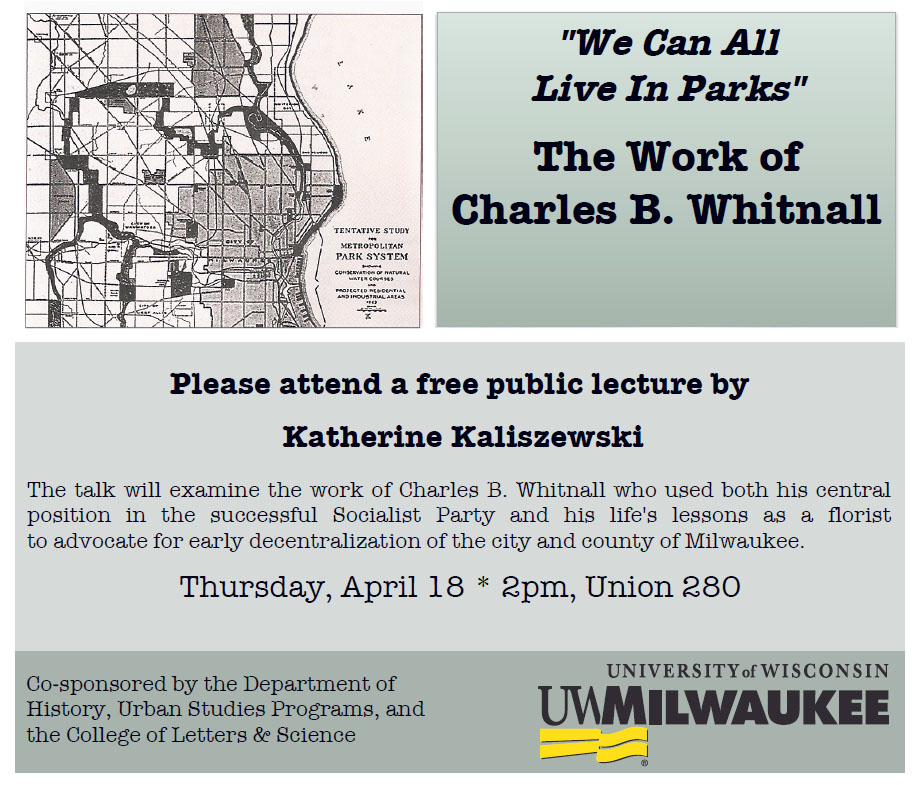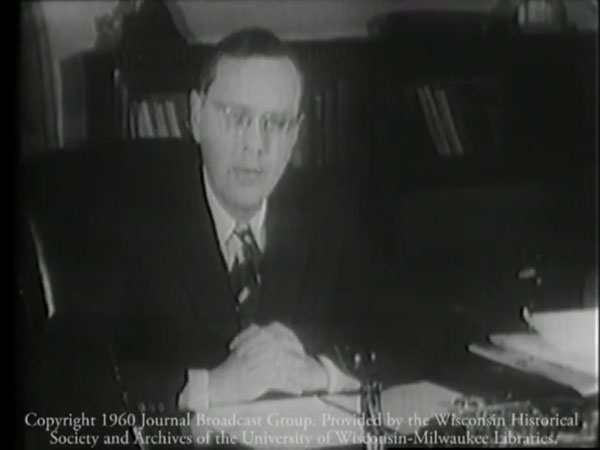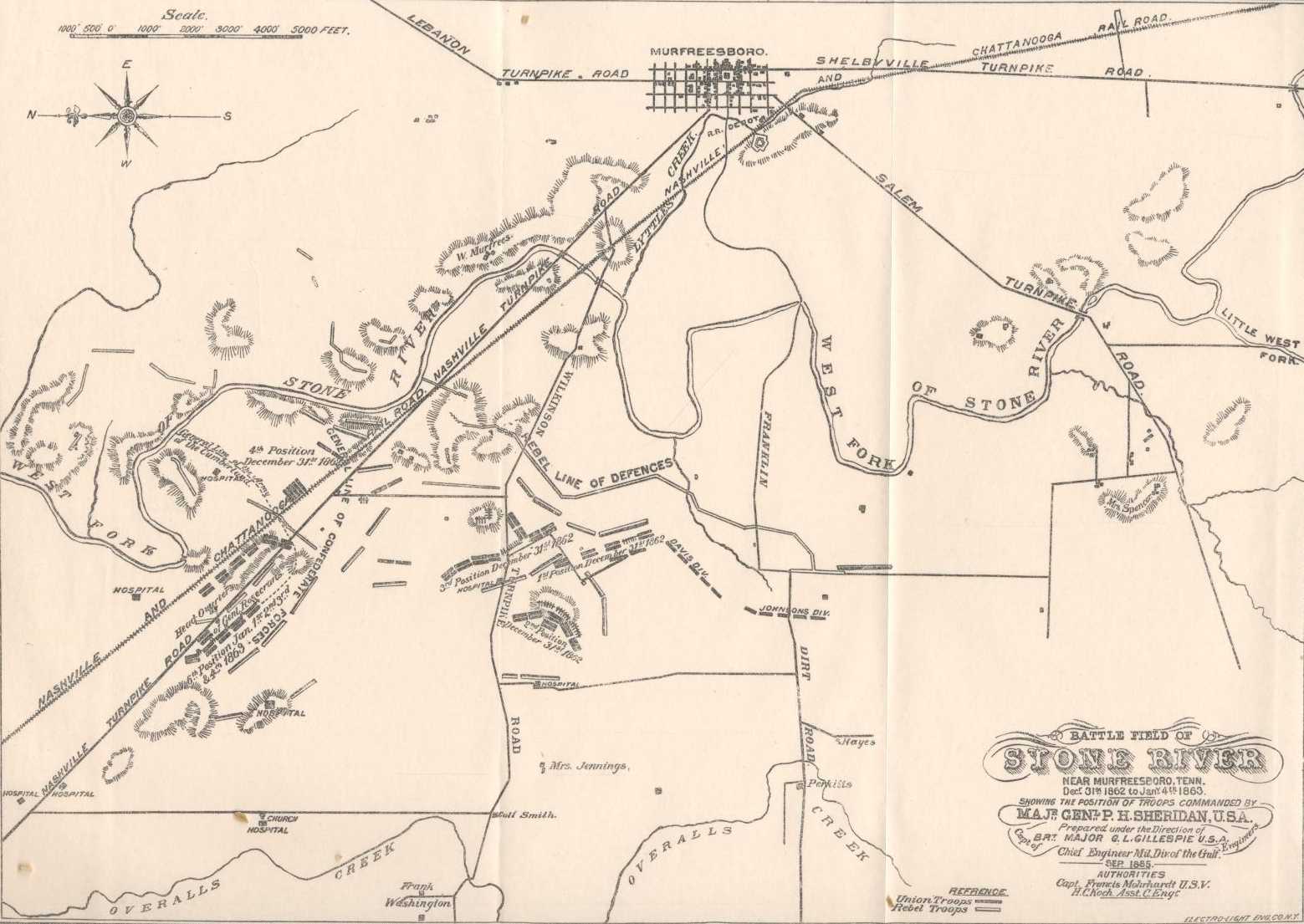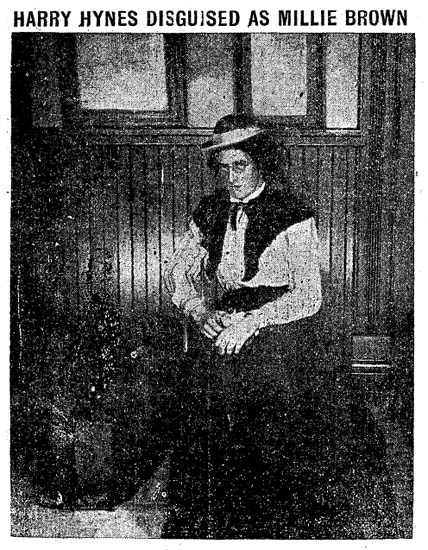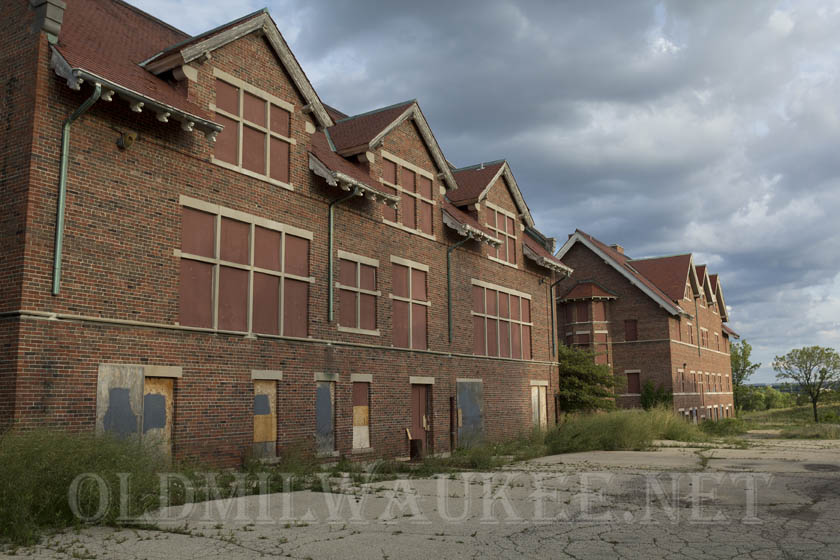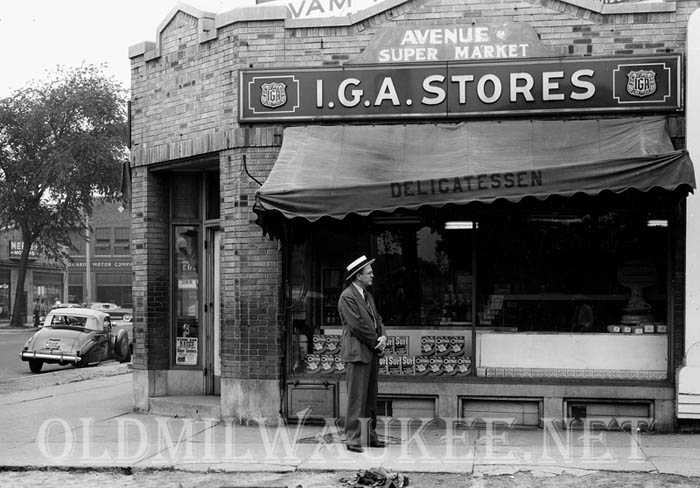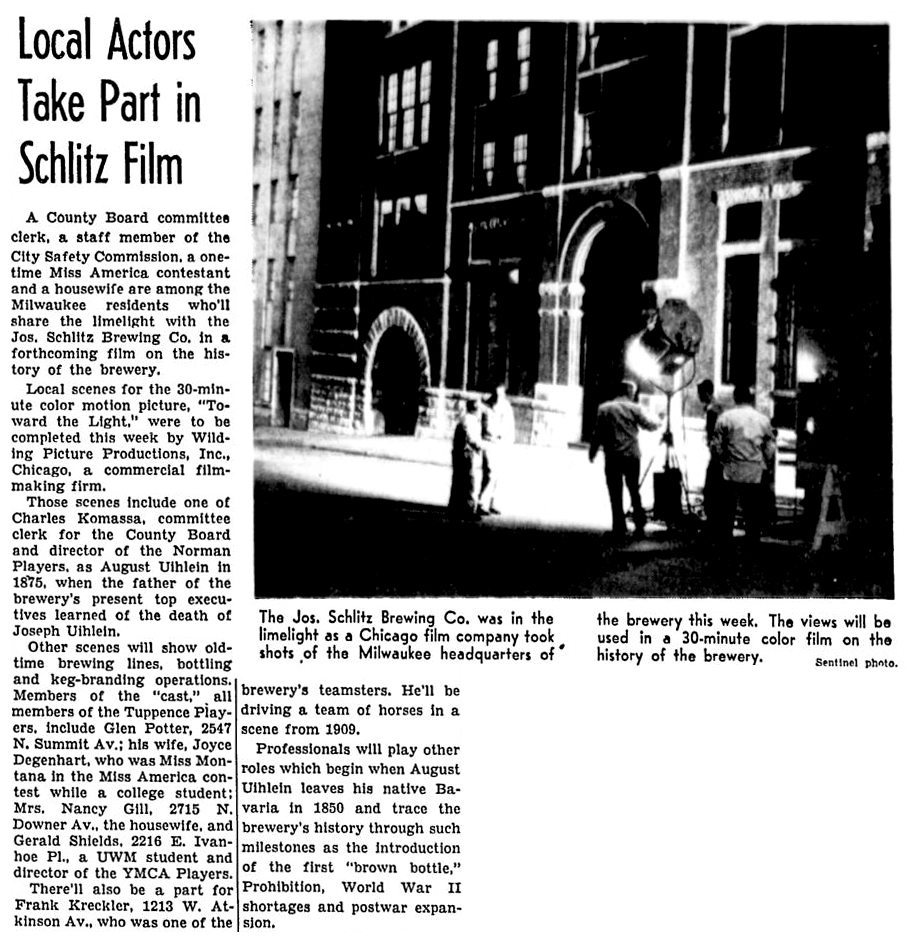The late 1950s was a time of fear far beyond what we experienced post 9/11 and still today. The Cold War and nuclear armageddon hysteria was reaching its climax all across the country. The Civil Defense Administration spent untold billions building fallout shelters and mobilizing local governments for evacuation plans.
Milwaukee, as an industrial center was a potential target of Soviet long range bombers and later ICBMs. On July 20, 1956, the first of many large scale civil defense exercises was planned across the entire country. Two nuclear bombs, each with the equivalent of 100,000 tons of TNT were “dropped” on Milwaukee in the simulation. Evacuation plans had already been drawn up the previous year as shown in the map below. The day of the simulation at 2:10pm, Conelrad (Civil Defense Radio Network) halted all radio and television broadcasts to explain the exercise to citizens. The emergency government of Milwaukee including Mayor Ziedler had evacuated to St. John’s Academy in Delafield. The exercise was meant to acquaint civil and military leaders as well as the public with the realities of survival from a nuclear war. Approximately 180,000 people were anticipated to die in the Milwaukee area from the bombs.
The result of the simulation was a large push for building more public and personal fallout shelters and stockpiling them for survival in the aftermath. Evacuation plans were solidified and signs were placed along the routes to clearly mark where people were meant to escape. Even before this in the early 1950s, schools had naive educational programs to teach their students survival, including “Duck and Cover”.
The Neenah Historical Society will begin an exhibition on May 1st about personal fallout shelters and plans for surviving nuclear holocaust.

